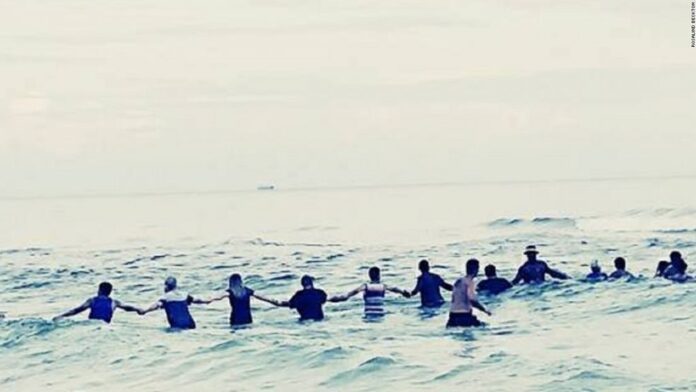Over the weekend, strangers formed an 80-person human chain in the waters of Panama City Beach. Their heroic efforts were to rescue 10 swimmers caught in rip currents and pulled away from shore. With everyone working together, all the swimmers were brought safely back to shore after an hour of struggling in the perilous water.
“Rip currents are the biggest dangers to swimmers at the beach,” says Dustyn Shroff, Vice President of GreatFlorida Insurance, Florida’s largest independent boat insurance agency.
In their annual poll of lifeguard agencies, the U.S. Lifesaving Association (USLA), reported 4,345 people were rescued from rip currents at Florida Beaches in 2016. In fact, 80 percent of beach rescues are a result of rip currents.
The National Oceanic and Atmospheric Association (NOAA), defines rip currents as powerful, narrow channels of fast-moving water. They move at speeds up to eight feet per second and can sweep even the strongest swimmers out to sea. Rip currents can occur at any beach with breaking waves.
While the terms are often confused, rip currents are different than rip tides. A rip tide is a strong current associated with the swift movement of tidal water through inlets and bays. It is a predictable rise and fall of the water level.
Also, different are undertows. Undertows occur where waves break on the beach. A large uprush and backwash of water and sand are generated is and quickly pulled into the next breaking wave. Swimmers feel like they are being sucked underwater when the wave breaks over their head. In an undertow, people are tumbled around but the return flow only goes a short distance to the next breaking wave. You are not pulled out to sea or into deeper waters.
“Swimmers in a rip current often panic and try swimming back to shore becoming exhausted, subsequently putting themselves as risk for drowning,” reminds Buck with GreatFlorida Insurance, Florida’s largest independent boat insurance agency.
To ensure your safety, swim in an area where there is a lifeguard on duty. The USLA reports, the chances of drowning are 1 in 18 million when a lifeguard is on duty. Their additional rip current tips include:
Check the local beach forecast for current water conditions before heading out.
Once at the beach, look around for warning flags and signs before you get in the water.
If you find yourself in a rip current stay calm.
Strong swimmers you can try swimming parallel to the shore. If not, float it out or calmly tread water until out of the current, then swim to shore.
Do not fight the current!
Remember, many people drown trying to save someone else from a rip current.
GreatFlorida Insurance can provide you with peace of mind while out on the water. We offer comprehensive boat insurance for all types of vessels.





